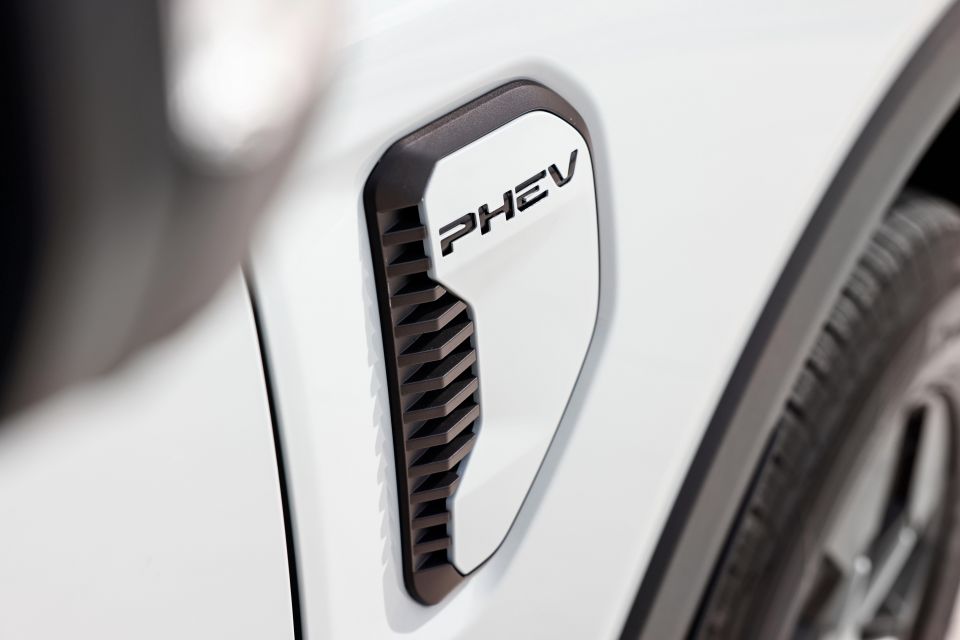Ford was willing to sacrifice performance for efficiency in developing its first Ranger plug-in hybrid (PHEV) ute, which features a heavily detuned version of the turbo-petrol four-cylinder engine found in the Ford Mustang EcoBoost.
While standard variants of the Ranger are offered with a choice of two turbo-diesel engines – a 2.0-litre four-cylinder and 3.0-litre V6 – the PHEV pairs a 2.3-litre four-cylinder turbocharged petrol engine with a 75kW electric motor.
It’s a version of the same engine that’s been used to power performance models both past and present, from the Focus ST and RS to the current Mustang EcoBoost. The EcoBoost powertrain also has a home in the US-market Ranger and the Volkswagen Amarok ute, which shares its platform with the Ranger.
But while outputs tally 232kW/475Nm and 222kW/452Nm for the Mustang and Amarok, respectively, the Ranger PHEV makes do with just 138kW and 411Nm, albeit supplemented by electric power.
Hundreds of new car deals are available through CarExpert right now. Get the experts on your side and score a great deal. Browse now.
Senior global product executive, Jim Baumbick, says the decision to detune the engine for this application was made in the name of efficiency.
“Could you add more performance? Yes. Would it come with tradeoffs? You bet – fuel economy,” Mr Baumbick, the vice president of advanced product development, cycle planning and programs, told Australian media in Iceland.
“One of the critical attributes of a hybrid is total cost of ownership and fuel-efficiency.”
Ford claims average fuel consumption of 2.9L/100km for the Ranger PHEV, while carbon emissions tally 66g/km.
In isolation, plug-in hybrid versions of the Ranger are an eco-friendly option in the mid-size ute market. However, key Chinese rivals have the Ranger beat in terms of efficiency – the BYD Shark 6 and GWM Cannon Alpha PHEV consume a claimed 2L/100km and 1.7L/100km, respectively.
Both also boast combined power outputs in excess of 300kW, well north of the Ranger’s 207kW, with torque figures that fall either side of its 697Nm.
Despite its power deficiency, the Ranger PHEV offers benchmark 3.5-tonne braked towing capacity and up to 973kg of payload.
Ford maintains that the Ranger PHEV strikes the right balance between performance and efficiency, even when compared to both segment competitors and other Ranger variants.
“For us, it was about optimising the system for performance, towing and capability,” said Mr Baumbick.
“Our target was diesel [performance] or better.

“The PHEV offers hybrid propulsion, [better] fuel economy, and the superpower of Pro Power Onboard.”
The Ranger PHEV will serve as a key pillar of Ford’s initial response to the New Vehicle Emissions Standard (NVES) in Australia, with sales of the greener ute set to help offset fines accrued by other models in the lineup.
“As we know, from July 1, things change a little bit, so it’s a very important part of our mix,” Ford Australia and New Zealand CEO, Andrew Birkic, told CarExpert back in April.
“I believe with electrification, what you need is that balance. Obviously there’s a compliance element, but it’s got to be customer-driven.
“It has to be customer-driven because that’s what will drive your sales, and that’s why what we’ve done is build a vehicle that’s the best of both worlds, whether it’s towing or carrying or off-road capability, that’s what the PHEV does and that’s what separates it.”

MORE: Everything Ford Ranger


